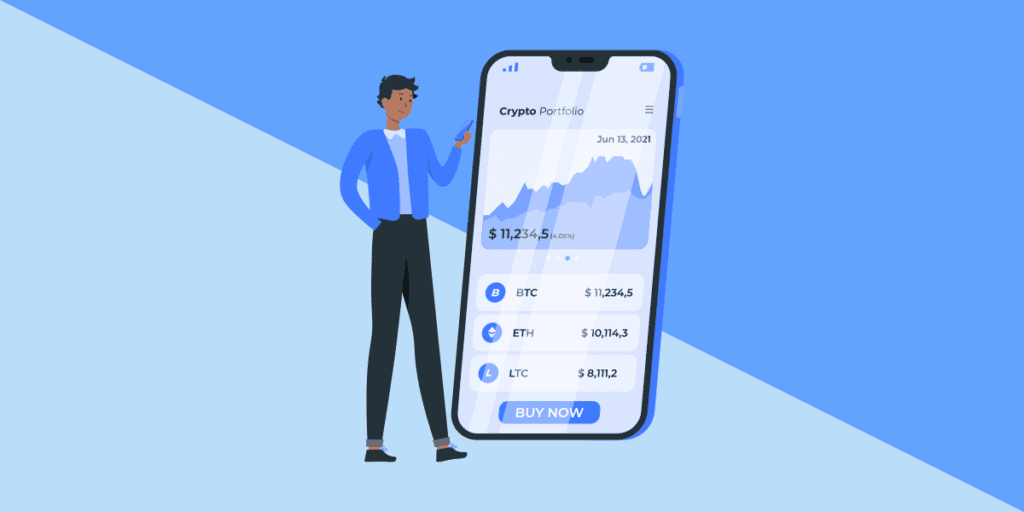As blockchain technology continues to gain traction, the world of finance is witnessing a paradigm shift. Digital assets, once considered a niche domain, are now emerging as a major player in the financial ecosystem.
With the rise of cryptocurrencies, blockchain-based marketplaces, and decentralized finance, existing finance professionals and those entering the industry need to be aware of the potential impact of digital assets on their careers.
In this article, we’ll explore the basics of digital assets, their growing popularity, and the ways in which blockchain technology is revolutionizing the financial industry.
We’ll also take a look at the implications of this transformation on the roles and responsibilities of finance professionals, and provide insights into how they can stay ahead of the curve in this rapidly evolving landscape.
- What are digital assets?
- Types of digital assets
- The role of digital assets in investing
- How digital assets can be used in a portfolio
- Digital asset adoption & the move into mainstream
- Which finance careers are involved with digital assets?
- Outlook for digital assets in the finance sector
- Does the CFA Curriculum include digital assets?

What are digital assets?
Essentially, digital assets refer to any type of information or data that is stored digitally and has value to its owner. This can include various types of assets such as cryptocurrencies, digital art, digital music, domain names, online gaming assets, and more.
Cryptocurrencies such as Bitcoin, Ethereum, and Litecoin are some of the most well-known types of digital assets. These digital assets are stored in a decentralized ledger called a blockchain and can be bought, sold, and traded on various cryptocurrency exchanges.
Digital art and music are also becoming increasingly popular as digital assets, with blockchain-based marketplaces allowing creators, organizations and individuals to monetize, trade and speculate on unique, one-of-a-kind digital assets.

Types of digital assets
There are a wide range of digital assets used in the world today, and the list is growing all the time. But when we talk about digital assets, there are a few that are of particular importance to anyone working in the financial and investment sectors.
Cryptocurrencies
Cryptocurrencies are a form of digital asset that use cryptography to secure transactions and control the creation of new units. They are decentralized, meaning they are not controlled by any central authority such as a government or financial institution. Instead, they operate on a peer-to-peer network of computers and users.
Cryptocurrencies can be used as a medium of exchange, a store of value, or a speculative investment. Some of the most popular cryptocurrencies include Bitcoin, Ethereum, Binance Coin, Cardano, and Dogecoin.
Each cryptocurrency has its own unique characteristics, including its supply limit, mining process, and transaction speed.
Bitcoin, the first and most well-known cryptocurrency, was created in 2009 by an anonymous person or group known as Satoshi Nakamoto. It has a limited supply of 21 million coins and uses a proof-of-work algorithm to verify transactions and generate new coins.
Ethereum, launched in 2015, is the second-largest cryptocurrency by market capitalization. It is known for its smart contract capabilities, which allow developers to build decentralized applications (DApps) on its blockchain.
There are now a significant number of cryptocurrencies available on various exchanges, with some taken more seriously by investors than others.
Dogecoin, for example, started as a joke based on a popular internet meme, but has since gained a large following and significant market capitalization. It is known for its low transaction fees and fast transaction times.
NFTs
Non-fungible tokens (NFTs) are digital assets that use blockchain technology to verify ownership and authenticity.
Unlike cryptocurrencies, which are interchangeable and have the same value, each NFT is unique and represents a specific asset, such as a piece of artwork, music, or other digital content.
NFTs are created using smart contracts on a blockchain, such as Ethereum, and are stored on a decentralized network. This allows for secure and transparent ownership and transfer of the NFTs.
One example of an NFT is Beeple’s digital artwork, “Everydays: The First 5000 Days,” which sold for $69 million at a Christie’s auction in March 2021. The artwork was sold as an NFT, which verified its authenticity and allowed the buyer to own a unique digital asset.
Smart contract platforms
Smart contract platforms are decentralized blockchain networks that allow developers to create and deploy smart contracts. Smart contracts are self-executing contracts that automatically enforce the terms of an agreement between parties without the need for intermediaries like lawyers or banks.
Smart contract platforms allow for the creation of decentralized applications (DApps) that can be used in a variety of industries, from finance and real estate to gaming and supply chain management.
One example of a smart contract platform is Ethereum; its smart contract capabilities have made it a popular choice for developers creating DApps and decentralized finance (DeFi) protocols.
Other smart contract platforms include:
- EOS, which uses a delegated proof-of-stake consensus algorithm and aims to provide a high-performance blockchain for DApps;
- NEO, which is often called the “Chinese Ethereum” and allows for the creation of DApps in multiple programming languages; and
- Polkadot, which aims to provide interoperability between different blockchain networks.
Smart contract platforms provide a powerful tool for developers to create decentralized applications and automate complex business processes in a secure and transparent manner.
Stablecoins
Stablecoins are a type of cryptocurrency that aim to maintain a stable value, usually pegged to a fiat currency such as the US dollar, or a commodity like gold. They are designed to address the volatility and price fluctuations commonly associated with other cryptocurrencies like Bitcoin and Ethereum.
Stablecoins can be used as a medium of exchange, a store of value, or a speculative investment. They provide users with the benefits of blockchain technology, such as fast and secure transactions, while also providing price stability.
One example of a stablecoin is Tether (USDT), which is pegged to the US dollar at a 1:1 ratio. Tether is currently the most widely used stablecoin and is often used as a proxy for US dollars in cryptocurrency trading.
Another popular stablecoin is USD Coin (USDC), which is also pegged to the US dollar at a 1:1 ratio. USDC is backed by a consortium of companies and is audited regularly to ensure that it maintains its price stability.
Stablecoins provide a valuable tool for users looking to transact in cryptocurrency without the risk of price volatility. They also provide a bridge between the traditional financial system and the world of cryptocurrency, allowing for easier on-ramps and off-ramps between the two.
DAOs
DAOs, or decentralized autonomous organizations, are organizations that operate on a decentralized blockchain network and are governed by smart contracts rather than a centralized authority.
DAOs are designed to be transparent, autonomous, and community-driven, allowing for democratic decision-making and ownership.
Members of a DAO hold tokens that represent their ownership and voting power within the organization. Decisions are made through a decentralized voting process, with each member’s vote weighted based on the number of tokens they hold.
One example of a DAO is MakerDAO, which is a decentralized lending platform that allows users to borrow and lend stablecoins using collateral in the form of cryptocurrencies. MakerDAO is governed by MKR token holders, who can vote on changes to the platform’s policies and fees.
DAOs provide a new, alternative solution for organizational structure and governance, allowing for democratic decision-making and ownership on a decentralized blockchain network.
While still in their early stages, DAOs have the potential to disrupt traditional organizational structures and provide a more transparent and community-driven model for businesses.
CBDCs
CBDCs, or central bank digital currencies, are digital versions of a country’s fiat currency that are issued and controlled by the central bank. CBDCs are designed to provide the benefits of digital currencies, such as faster and cheaper transactions, while also providing the stability and security of a fiat currency.
CBDCs can be used for a variety of purposes, including payments, remittances, and financial inclusion. They may also offer new opportunities for central banks to conduct monetary policy, such as setting negative interest rates or providing direct stimulus to individuals and businesses.
Several countries are currently exploring the possibility of issuing a CBDC. One example is China, which has been testing a digital version of its yuan currency in select regions. The digital yuan is designed to be used in a variety of payment scenarios, such as online shopping and peer-to-peer transactions.
In the US, the Federal Reserve has been studying the potential benefits and risks of a digital dollar, while in the EU, the European Central Bank has been exploring CBDCs with a digital euro project.
CBDCs represent a potentially transformative development in the world of digital currencies and central banking. While still in the early stages of development, CBDCs have the potential to provide new opportunities for financial inclusion and innovation, while also offering the stability and security of a fiat currency.

The role of digital assets in investing
Digital assets, such as cryptocurrencies, NFTs, and tokenized securities, can be used for investment purposes in a variety of ways.
Some investors buy and hold digital assets as a long-term investment, while others trade them actively on exchanges. Digital assets can also be used as a hedge against traditional investments, such as stocks and bonds, or as a speculative investment.
In fact, around a third of hedge funds are now actively investing in crypto, which is up from about a fifth just a year ago.
The popularity of investing in digital assets has grown significantly in recent years, with many investors attracted to the potential for high returns and the disruptive potential of blockchain technology. The total market capitalization of cryptocurrencies, for example, grew from less than $20 billion in 2016 to over $2 trillion in 2021 (although this subsequently dropped to around $1.2 billion at the beginning of 2023).
Investing in digital assets can be a high-risk, high-reward proposition.
It offers several potential benefits. These include high potential returns; providing a method of diversification; and accessibility, as assets can be bought and sold 24/7 on cryptocurrency exchanges, making them more accessible to investors than traditional assets like real estate or private equity.
However, investing in digital assets also carries several risks and drawbacks. These include high levels of volatility, regulatory risks and security risks.
Digital assets are known for their high volatility, with prices often experiencing sharp fluctuations in short periods of time. The regulatory landscape for digital assets is also still evolving quite quickly, and there is a risk that regulators may impose restrictions or limitations on their use or trading.

How digital assets can be used in a portfolio
Digital assets can be used within an investment portfolio in a variety of ways, depending on an investor’s goals, risk tolerance, and investment strategy.
Some investors are using digital assets, such as Bitcoin, as a hedge against inflation. With its limited supply and decentralized nature, this type of asset is seen as a way to protect against the erosion of purchasing power, particularly when compared to more traditional investments that are more closely related to the performance of an economy.
As mentioned, institutions like hedge funds are increasingly investing in digital assets as a way to diversify their portfolios. As digital assets are uncorrelated with traditional assets, such as stocks and bonds, they can be used as a means to mitigate risks associated with these options, and to seek out opportunities for additional sources of returns.
Firms are also using digital assets as a way to invest in early-stage blockchain and cryptocurrency companies. This allows them to participate in the potential growth of the industry while also managing risk through diversification.
Of course, some investors actively trade digital assets to take advantage of the high volatility and liquidity of the market. This can be a risky strategy, but can also provide high returns for skilled traders.

Digital asset adoption & the move into mainstream
The interest in digital assets has grown significantly in recent years, with mainstream investors increasingly looking to add them to their portfolios.
The growing adoption of digital assets by both institutional and retail investors is a strong indication of the potential for the industry to disrupt traditional finance and become a mainstream asset class.
Bitcoin, the world’s largest cryptocurrency by market capitalization, has seen a surge in interest from institutional investors over the last few years.
While the headlines about Bicoin’s dramatic rise in value have turned to focus more on its drop in the last couple of years, there nevertheless remains significantly more interest in digital assets amongst mainstream investors than even half a decade ago.
By 2021, 72% of institutional asset managers reported that they planned to introduce asset tokenization. The same year, Coinbase, the largest cryptocurrency exchange in the US, went public in a highly anticipated initial public offering (IPO). The IPO was seen as a watershed moment for the industry, signaling the growing mainstream adoption of digital assets.
Meanwhile, in markets like Canada and Europe, exchange-traded funds (ETFs) that track digital assets, such as Bitcoin and Ethereum, have been approved by regulators and are available for investment. This provides investors with a more accessible and regulated way to invest in digital assets, with digital asset focused ETFs launched by a number of firms.
Retail investors, including younger generations, are also increasingly interested in digital assets. According to a 2023 survey by Coinbase, 20% of US adults, or approximately 51 million people, own cryptocurrency.
A growing number of companies, including Tesla and Square, have invested in Bitcoin as a treasury asset, signaling growing acceptance of digital assets by mainstream corporations.

Which finance careers are involved with digital assets?
Digital assets are a growing area of interest for many financial careers, with various roles involved in different aspects of the industry, including development, investment, and risk management.
As the industry continues to evolve, it’s likely that there’ll be even more opportunities for finance professionals to get involved in digital assets.
Fintech
Digital assets and blockchain technology are closely tied to the fintech industry. Fintech firms like Coinbase, Gemini, and Kraken are involved in the development and integration of digital assets into financial systems.
Fintech professionals may also be involved in creating digital wallets or trading platforms that allow users to buy, sell, and store digital assets.
Portfolio management
Portfolio managers might consider adding digital assets to their portfolios as a means of diversification or to take advantage of potential growth opportunities.
They may be involved in researching and analyzing digital assets and managing the risks associated with investing in them. Some asset management firms have launched cryptocurrency-focused funds, such as the Grayscale Bitcoin Trust.
Hedge funds
Managers at hedge funds use digital assets as a means of diversification or to generate alpha. They may employ trading strategies such as long/short or arbitrage to take advantage of market inefficiencies in digital asset markets.
There are also some examples of hedge funds that focus significantly and even exclusively on the digital asset space, including Pantera Capital and Galaxy Digital.
Investment banking
Investment banks can be involved in advising companies on initial coin offerings (ICOs) or other fundraising methods that involve digital assets.
Professionals working as investment bankers may also be involved in providing market-making or trading services for digital assets. Goldman Sachs and JPMorgan are among the investment banks that have recently expanded into digital assets.
Wealth management
Wealth managers may advise clients on investing in digital assets as part of their overall investment strategy. They may also provide education and resources to clients who are interested in learning more about digital assets.
Many big firms, such as Morgan Stanley and JPMorgan, have now launched cryptocurrency investment products for their clients.
Risk management
Risk managers may be involved in assessing and managing the risks associated with investing in digital assets. This may include market risk, liquidity risk, cybersecurity risk, and regulatory risk.
They may work with portfolio managers, traders, or other stakeholders to ensure that appropriate risk management practices are in place. Some insurance companies have also started offering coverage for digital asset holdings, such as BitGo and Lloyd’s of London.

Outlook for digital assets in the finance sector
The outlook for digital assets in the financial sector is positive, with significant potential for growth and innovation in the years ahead. As digital assets become increasingly mainstream, more financial roles are likely to become involved in this emerging industry.
One key area of growth is likely to be in fintech, where digital assets and blockchain technology are already having a significant impact. Fintech firms are expected to continue to innovate and develop new applications for digital assets, including in areas such as payments, lending, and asset management.
In the investment industry, digital assets are likely to continue to gain acceptance as an alternative asset class, with more portfolio managers and investors incorporating them into their investment strategies. Hedge funds and other alternative investment firms are also likely to become increasingly active in the digital asset space.
Investment banks and other financial institutions are also expected to continue to play a key role in the digital asset industry, providing a range of services including trading, custody, and advisory services.
In the wealth management industry, there is likely to be increased demand for advisors who are knowledgeable about digital assets, as more high-net-worth individuals seek to invest in this emerging asset class. Wealth management firms are also likely to launch more digital asset-focused products and services to meet this growing demand.
Overall, the outlook for digital assets in the financial sector is positive, with significant potential for growth and innovation in the years ahead.
As the industry continues to evolve, it is likely that more financial roles will become involved, creating new opportunities for professionals with expertise in digital assets and blockchain technology.
This likely means an increase in the number of jobs available in the sector, an increase in the value of those working with digital assets, and more opportunities available for professionals wanting to switch financial careers; particularly where experience in digital asset investing exists.

Does the CFA Curriculum include digital assets?
Since 2019, CFA Institute started to incorporate cryptocurrency and blockchain technology into its curriculum. This includes coverage of topics such as Bitcoin, Ethereum, and smart contracts. However, this content is currently only included as a small part of the CFA Level 1 curriculum, and is not yet a major focus of the program.
The CFA Institute has also launched a new digital assets certificate program, which covers a range of topics related to digital assets and blockchain technology. This program is designed to provide investment professionals with the skills and knowledge needed to analyze and invest in digital assets.
While the CFA curriculum is still evolving in terms of its coverage of digital assets, it is clear that the industry is beginning to recognize the importance of this emerging asset class.
As the industry grows and moves further into the mainstream, it is likely that the CFA program will incorporate more content on digital assets in the years ahead, and that a range of other qualifications focusing on digital assets will become increasingly valuable.
We hope you found the introduction above to the world of digital assets helpful! Meanwhile, here are other related articles which may be of interest:
